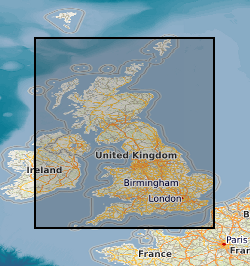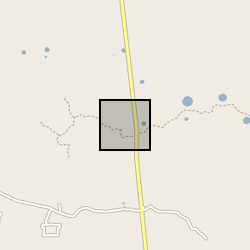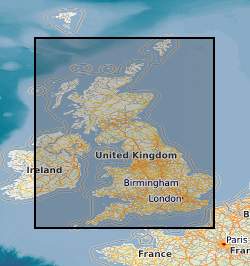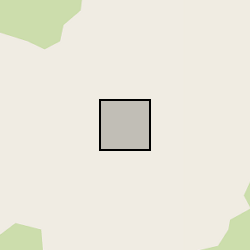Isotopes
Type of resources
Available actions
Topics
Keywords
Contact for the resource
Provided by
Years
Formats
Representation types
Update frequencies
-

Marine sediment core sediment and pore water fraction barium concentration and isotope data with associated error collected during the International Ocean Discovery Programme (IODP) expedition 391 at Walvis Ridge, offshore Namibia, collected November 2021 - February 2022. Latitude and Longitude of each specific sample is listed in the datafile. Samples were measured on the Thermal Ionising Mass Spectrometer at the University of Oxford and have been drift corrected between 1st January 2023 and 30th September 2024. They are the final, complete record of the data. The data has an external error of 0.03 per mil and is deemed reproducible. Ethan Petrou is responsible for collection and processing of the data and can be contacted. The data was collected to increase the number of barium isotope measurements in the modern oceans and would be useful for any modern oceanography or geochemist interested in redox or paleoproductivity.
-

This website provides interactive access to geospatial isotope data for Great Britain. The site includes isotope data for strontium, oxygen and sulphur distributions across Great Britain. The user can input isotope measurements from a sample and the website will compare it with British data distributions and provide a downloadable map of areas that match the composition of the unknown. The project is rooted in archaeological studies but has applications in the modern world of food traceability.
-

Rhenium-osmium abundance and isotope data obtained for the Nakatengu Creek Section, Japan. Sample collection August 2021 principally funded by NSF-NERC award. The approximately 2000 m stratigraphically thick Cretaceous section mainly comprises organic bearing siltstone, siliceous mudstone, sandstone and interbedded tuff horizons.
-

Dataset contains an interannual to sub centennial resolution record of carbonate oxygen and carbon isotopes, bulk sediment geochemistry and sedimentology from a 2.95 metre-long core (YC2) from Yaal Chac. The core was dated using a combination of radiocarbon dates and short-lived radio-isotopes. Data are presented in Metcalfe et al (2022) Quaternary Science Reviews https://doi.org/10.1016/j.quascirev.2022.107445
-

Rhenium-osmium abundance and isotope data synopsis obtained for the Nakatengu Creek and Soashibetsu-gawa OAE1a (oceanic anoxic event 1a) Sections, Hokkaido, Japan, and the Sauzeries OAE1a Section, France. Sample collection August 2021 principally funded by NSF-NERC award. For the Nakatengu Creek and Soashibetsu-gawa sections approximately 2000 m stratigraphically thick Cretaceous section mainly comprises organic bearing siltstone, siliceous mudstone, sandstone and interbedded tuff horizons. The Re-Os data is published in Youjuan Li et al. ,Radioisotopic chronology of Ocean Anoxic Event 1a: Framework for analysis of driving mechanisms.Sci. Adv.10,eadn8365(2024).DOI:10.1126/sciadv.adn8365 For the Sauzeries OAE1a section, a 20 m interval comprises interbedded marl-dominated, marl-limestone and fine grained clays. This data is currently not published
-

Clumped isotope analyses, raw data, replicates and temperatures calculated using the empirical calibration of Wacker et al. (2014), recalculated using the [Brand] isotopic parameters.
-

Database of samples taken from the Norham Westmains Farm borehole for isotope, thin section, palynology and fossil analysis. Westmains Farm, Norham, Berwick-upon-Tweed NT 91589 48135. BGS borehole ID NT94NW20.
-

This data set contains a record of nitrate concentrations and isotopic composition present within the drip waters and speleothem carbonate deposits of Cueva-cubío del Llanío, northern Spain. Data were collected between 2018 to 2020, and specifically address the nitrate composition of the cave drip waters, pool waters, rocks, soil, vegetation and contemporary speleothem carbonate. Calculations are also undertaken to assess the partitioning of nitrate between cave drip water and speleothem carbonate deposits. Data pertaining to speleothem nitrate content also extend to other cave locations (Pooles cavern, UK; Brown's Folly Mine, UK, Ease Gill Caverns, UK; Rukiesa cave, Ethiopia; Cueva Perlas, N. Spain). Sample analysis was performed at Lancaster University and the UK Centre for Ecology and Hydrology under NERC facility access grant LSMSF\CEH\L\125\11\2018. The data presented represent the full underlying dataset to Wynn et al., 2021, Chemical Geology: DOI.org/10.1016/j.chemgeo.2021.120172.
-

This file documents the strontium isotope data, and the manner in which it has been processed, to supply the reference data for isotope domains of the Biosphere Isotope Domains GB (V1) map. It includes a summary of the analytical methods used to determine the isotope ratios though time.
-

Chemical analysis of pyroxenes and BSE-SEM images from pumices and lava flows from Popocatepetl Volcano, Mexico. Whole rock isotope data from pumices and lava flows from Popocatepetl Volcano, Mexico.
 NERC Data Catalogue Service
NERC Data Catalogue Service